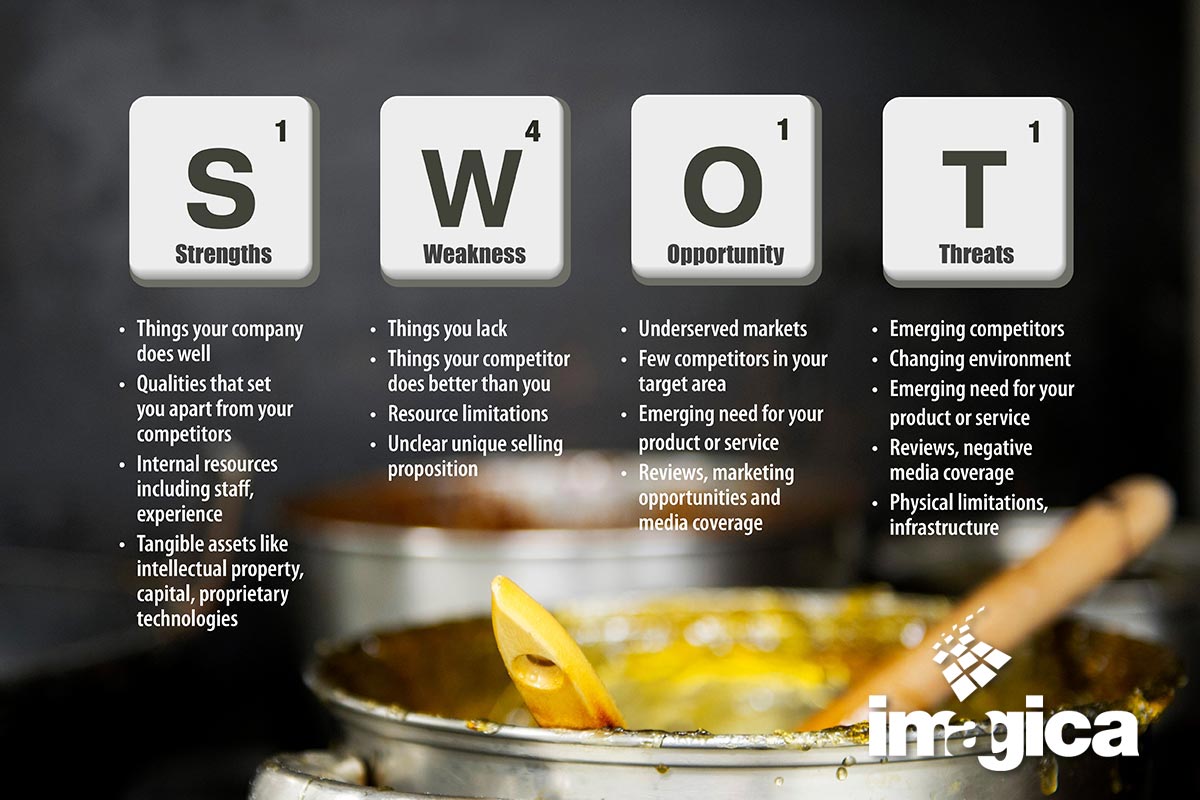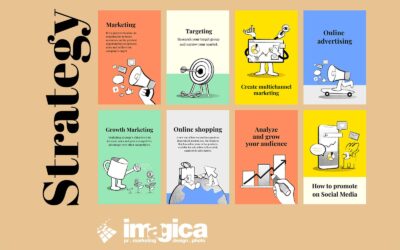What Is a SWOT analysis and why do I need one?
“SWOT” is an old school acronym for a process that involves taking a close objective look at your business or brand’s strengths, weaknesses, opportunities, and threats. You’re probably already know most of them, but breaking all this information down into organized sections can give you real perspective.
With a thorough SWOT analysis, you can gain insights like:
- What opportunities are the most attractive
- What areas of your business need an overhaul
- Which of your competitors represents the most immediate threat
You can apply this technique to a specific area of your business – such as your marketing strategy or product development – or to your brand as a whole. Either way, to get the most out of a SWOT analysis, you need to dig deep. If you focus on superficial aspects, or you don’t involve the right people in the process, you won’t get much out of it.
How to Conduct a SWOT Analysis of Your Brand (In 4 Simple or Not So Simple Steps)
Any size business can run this process as a working tool. You’ll get the most out of this the more people within your organization you enroll. You’ll also get more feedback and input.
For good questions to help you get started visit this post.

Step 1: Break Down Your Strengths
Every business has at least one element that gives it an edge over its competitors (competitive advantage), no matter how small it might be. Knowing what those advantages are really important. Don’t forget to factor in elements such as access to resources, as well as efficient and effective processes in your ops.
An example of your Strengths might look like this if you were say, Netflix, a business that most of us can relate to.
Some Netflix’s strengths include:
- First-mover advantage over other streaming companies
- Vast swaths of data about the content its users like
- The ability to produce content at a fast pace other streaming services haven’t been able to match
- Worldwide availability
- Excellent brand recognition
A SWOT analysis begins with your brand’s strengths because they are often the easiest to break down. We all like to focus on the positives but to get a clear picture, you need to be willing to look at the other side of the stick.
Step 2: Lay Out Your Weaknesses
Laying out your weaknesses is not an exercise in self-deprecation. It should be an honest study in self-reflection that enables you to figure out in which ways you are vulnerable.
Areas you might consider are examining areas you are lacking productivity and any elements of your brand that may prevent your prospects from converting to you. Be honest, as holding back will only hurt you in the long run.
In our Netflix example weaknesses become apparent, these include:
- Burning through $$$ at an incredibly fast pace to keep quality content output going
- Difficulty renewing licenses for key properties
- Content library is limited if you use it as your primary source compared to rivals like Hulu
- No longer the only viable name in town when it comes to streaming
- User interface (UI) is not so good
It’s also important to understand that strengths and weaknesses shift over time. In its infancy, Netflix’s biggest weakness was lacking a broad content library. These days, that’s no longer the case. However, it does face some difficulty in renewing essential licenses because it has WAY MORE competition.
A takeaway here is that a SWOT analysis isn’t something you do just once. As your brand evolves, you’ll need to return to the drawing board often if you want to make sure your business is on the right track.
Step 3: Define Your Opportunities
The first two steps of a SWOT analysis are an exercise in introspection. Once you have that information, you can begin to build plans around it, starting with opportunities for growth.
Opportunities can certainly include innovative technologies and products. However, also keep your eyes open for new target audiences, small advantages over competitors you can seize and expand, and even solutions to your weaknesses.
An example of your opportunities may look like this if you were Netflix:
- Publishing new shows and movies at a rate competitors can’t match
- Using its wealth of data to create highly-targeted content to maximize user satisfaction
- Focus on redesigning its interface to make it easier to navigate their library and find content in a easier way
- Targeting regions where other streaming services don’t have a foothold yet to consolidate their market share
When it comes to business opportunities, it’s important to keep an open mind but to be realistic. Use achievable opportunities that are within your budgetary and human resource grasp.
Step 4: Consider Your Threats
Pinpointing your threats requires attention to your business sector at large. New competitors, the NEW WAYS your competitors do business, changes in customer or client trends and behaviors, the sustainability of your processes, and the emergence of new technologies are all factors to consider.
Netflix’s threats might look like:
- New streaming services constantly entering the field
- Other prominent players starting to sink massive amounts of money into original content
- Customers who dislike the idea of paying for multiple streaming services
- Potential for stagnation if it can’t keep up its aggressive content output
Be honest with yourself regardign how real these threats are and NEVER underestimate your competition.
Finally
Every business has unique strengths and weaknesses. Knowing what those are is vital if you want to maximize the results from ANY marketing initiative. The better you know your brand, the higher-quality products and services you’ll be able to deliver. Remember, this is not a one and done exercise. As illustrated by 2020, the dynamics of our business environment is forever changing, sometimes too fast. It’s good to take an objective look at your business on a regular basis so you can make adjustments wherever necessary.
The concept of a SWOT analysis is simple, and involves just four steps:
1. Break down your strengths.
2. Lay out your weaknesses.
3. Define your opportunities.
4. Consider your threats.
If you have any questions, reach out to Imagica. We can also perform a simple to complex SWOT Analysis for you to help evaluate your real needs. Thanks for checking out this SWOT outline.



